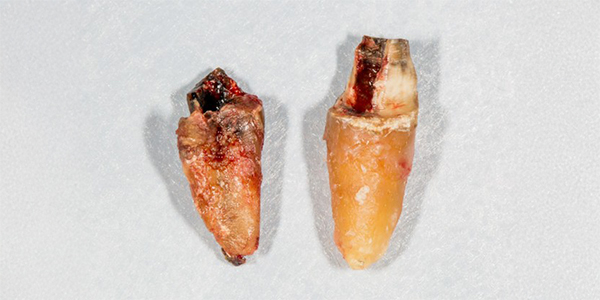The field of implant dentistry has seen tremendous advancements over the past few decades, with extraction and immediate implant placement becoming an increasingly popular treatment option. This approach not only saves time but also helps preserve bone volume and minimize soft tissue changes following tooth extraction. However, despite its advantages, immediate implant placement requires careful planning, precise surgical techniques, and thorough understanding of the patient’s clinical presentation to ensure success.
In this article, we will provide a comprehensive overview of extraction and immediate implant placement, focusing on the key considerations, advantages, potential complications, and best practices to help enhance the success of this treatment modality.
What Is Extraction and Immediate Implant Placement?
Extraction and immediate implant placement is a technique that combines the extraction of a non-restorable tooth with the immediate placement of a dental implant into the socket left behind. Traditionally, patients would need to wait several months after an extraction to allow for healing before an implant could be placed. Immediate placement, however, allows for the insertion of the implant in the same surgical session as the tooth extraction, with the goal of achieving both osseointegration of the implant and preservation of the surrounding hard and soft tissue structures.
This technique is appropriate for patients who have a tooth that needs to be extracted but who do not want to wait months for a conventional implant placement. The primary goal is to reduce treatment time, minimize bone resorption, and preserve the patient’s natural esthetics.
Key Advantages of Extraction and Immediate Implant Placement
- Preservation of Bone and Soft Tissues: One of the most significant benefits of immediate implant placement is the preservation of alveolar bone and soft tissues. After a tooth extraction, bone resorption typically occurs over time due to the lack of stimulation in the socket. Immediate placement helps to preserve the dimensions of the socket, reducing the need for additional procedures like bone grafting or sinus lifts.
Additionally, preserving the soft tissue contours around the implant site helps prevent the loss of gum architecture, which is particularly important in the esthetic zone.
- Reduction in Treatment Time: Immediate implant placement eliminates the need for multiple procedures and waiting periods, reducing the overall treatment timeline. Typically, a conventional extraction and implant placement require a healing period of several months, but with immediate placement, the patient can move more quickly to the restorative phase.
- Enhanced Esthetic Outcomes: Immediate implant placement can often lead to better esthetic results, especially in the anterior region. By placing the implant immediately after extraction, the dentist is able to help maintain the natural contours of the gum tissue. This is particularly critical in the esthetic zone, where soft tissue recession could otherwise create a compromised cosmetic result.
- Improved Patient Satisfaction: Immediate implant placement allows patients to avoid the inconvenience and prolonged healing times associated with traditional treatments. This can significantly improve patient satisfaction by reducing the number of procedures and appointments required for full restoration.
Key Considerations Before Immediate Implant Placement
While there are many advantages to extraction and immediate implant placement, several factors must be considered before opting for this approach.
1. Patient Selection
Not every patient is a suitable candidate for immediate implant placement. A thorough evaluation of the patient’s overall health, bone quality, and the condition of the remaining tooth roots must be performed. Ideal candidates typically meet the following criteria:
- Non-infected teeth: If there is significant infection or inflammation in the tooth to be extracted, immediate implant placement may not be advisable.
- Sufficient bone volume: The patient must have enough buccal bone and bone width to accommodate the implant. If the bone is compromised or the tooth has been infected for an extended period, the socket may not be adequate for implant placement without additional grafting.
- Absence of systemic health issues: Patients with uncontrolled systemic conditions, such as diabetes or osteoporosis, may face a higher risk of complications and should be carefully evaluated.
2. Type of Extraction
The condition of the tooth to be extracted plays a critical role in determining whether immediate implant placement is viable. If the tooth has a long, straight root with minimal bone loss, immediate placement is generally easier and more predictable. However, teeth with fractured roots, severe decay, or infection may not be ideal candidates, as these conditions can lead to additional complications, such as compromised bone integrity or damage to surrounding structures.
Additionally, when dealing with root fractures, there may be risks of damaging the adjacent bone during extraction, which could compromise the success of the implant.
3. Implant Selection and Positioning
The choice of the implant type and its placement is essential to the long-term success of the procedure. Factors such as implant diameter, length, and platform design must be considered based on the available bone and the intended final restoration.
The implant should be placed in the ideal three-dimensional position — apicocoronally, mesiodistally, and buccolingually. It is crucial to ensure that the implant is positioned in a way that maximizes osseointegration and supports the esthetics of the final restoration, while maintaining sufficient bone volume.
Angle correction and the use of computer-guided implant planning can help achieve optimal results, especially when immediate implant placement is being considered in challenging or highly visible areas.
Steps in the Extraction and Immediate Implant Placement Procedure
The procedure for extraction and immediate implant placement involves several key stages, and each must be performed with precision to ensure a successful outcome.
- Pre-Operative Planning
Before proceeding, thorough pre-operative planning is essential. This involves:
- Radiographic evaluation: 3D imaging (e.g., CBCT scan) is recommended to assess the bone volume and determine the exact location for the implant.
- Study models: In some cases, a surgical guide may be used to assist with the accurate placement of the implant.
- Patient assessment: This includes reviewing the patient’s medical history, ensuring there are no contraindications to surgery, and discussing expectations.
- Tooth Extraction
The extraction itself must be performed carefully to avoid damaging the surrounding bone and tissues. The goal is to minimize trauma to the alveolar ridge while preserving as much bone as possible. In some cases, techniques like socket shield or partial extraction therapy can be used to preserve the buccal bone and enhance esthetic outcomes.
- Implant Placement
Once the tooth is removed, the socket should be evaluated for its suitability for implant placement. The implant is then inserted into the prepared socket. Special attention should be paid to achieving primary stability, which is critical for osseointegration. A torque of 35 Ncm or more is often desired for immediate placement.
In some cases, if the implant cannot achieve sufficient stability, a temporary implant or temporary restoration may be placed to support the soft tissue while the final implant is planned.
- Soft Tissue Management
Proper soft tissue management is critical in immediate implant placement. The dentist should ensure that the gingival tissue is properly contoured around the implant and that the soft tissues are adapted in a way that will support the final restoration. A collagen plug or membrane may be used to protect the socket and enhance healing.
In the esthetic zone, tissue augmentation techniques such as connective tissue grafts can also be considered to prevent recession and ensure the preservation of the gingival architecture.
- Post-Operative Care
After the procedure, the patient should follow strict post-operative care instructions. This includes managing pain, avoiding undue pressure on the implant site, and following a soft food diet. The dentist should monitor the site closely, especially during the initial healing phase, and schedule follow-up visits to evaluate implant stability, soft tissue health, and any signs of infection.
Potential Complications and How to Mitigate Them
While immediate implant placement offers numerous advantages, it is not without risks. Some potential complications include:
- Infection or peri-implantitis: Ensuring sterile technique and proper soft tissue management is critical in preventing infection.
- Implant failure: Insufficient primary stability or improper implant placement can result in implant failure. Careful preoperative assessment and precise surgical techniques are key to avoiding this.
- Bone loss: Improper socket management or inadequate grafting may lead to bone resorption. Socket preservation techniques can help mitigate this risk.
By anticipating these potential complications and addressing them proactively, the chances of success can be greatly improved.
Conclusion
Extraction and immediate implant placement is a sophisticated procedure that offers significant benefits for both patients and clinicians. By preserving bone volume, reducing treatment time, and improving esthetic outcomes, this approach has become an increasingly popular choice for many dental practitioners. However, successful immediate implant placement requires a thorough understanding of the patient’s anatomy, careful surgical technique, and meticulous planning. By addressing the factors outlined in this article, clinicians can achieve successful outcomes and provide patients with the best possible results.












